Florida Beef Cattle Count as of J1
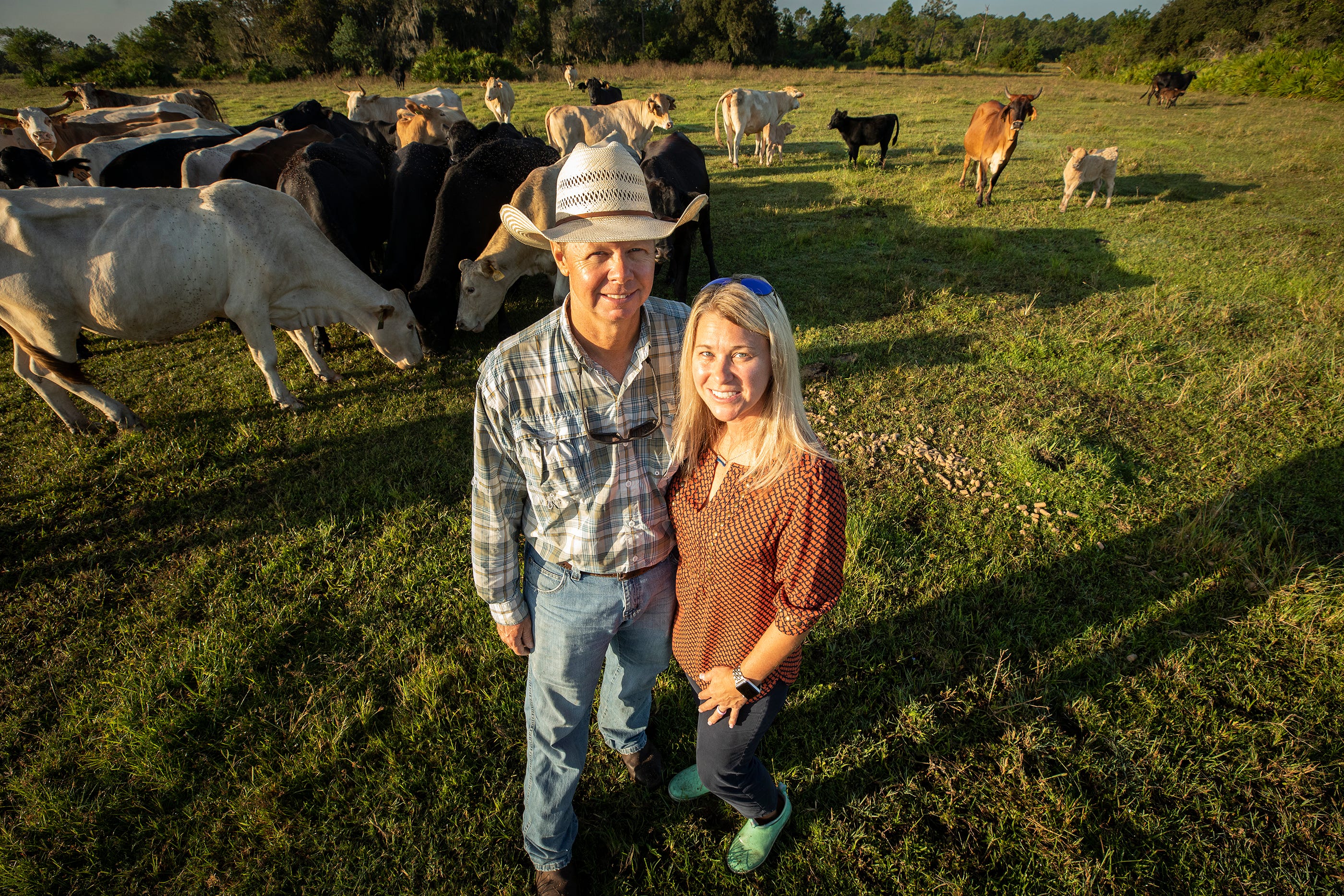
LAKE WALES — The sun slipped above Crooked Lake on a recent Oct morning as fourth generation Lake Wales rancher Stuart Fitzgerald and his wife Stephanie got out of a four-wheel drive vehicle, pulled out a bag of mineral-rich biscuits and began dumping the contents on the ground of a pasture along U.S. Highway 27 that his family has ranched since the 1940s.
"Come up on, girls!" Fitzgerald called to nigh two dozen cows and their calves equally he made his morn rounds to check on newborns, shriveled umbilical cords notwithstanding dangling from the well-nigh recent arrivals. The cows gathered near him, some with horns, lowing equally they jockeyed for a spot to eat.
"I gotta make it work," Fitzgerald said of his 500 head of cattle on that pasture and two other properties in the Lake Wales area. "We're losing ground every day."
Fitzgerald, 49, said he faces things his grandpa, J.K. Stuart, never would accept dreamed of when he bought 3,800 acres for about 25 cents an acre in the 1940s. Fitzgerald said those modern pressures include increasing regime regulations, encroaching invasive plants and trees, and calves sold to western feed lots from Mexico and Canada — which he said are driving downwardly U.Southward. prices for beef. He said information technology's hard to compete with foreign beef sources considering they can raise their cattle cheaper, and they brand it even more difficult for consumers to know their steak was raised.
"Being in the cow business, you e'er feel like you lot're under set on," said Fitzgerald, director of the Polk County Cattleman's Association.
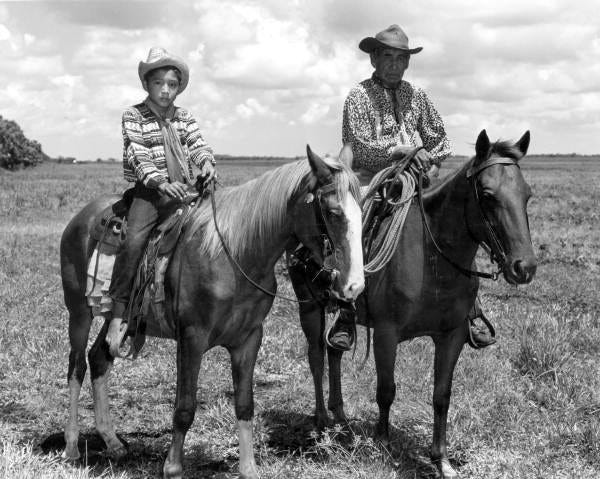
Country history
Co-ordinate to state of Florida archives, the state has the longest history of ranching in the United States. Florida's kickoff cows were brought past Spanish explorers Juan Ponce de Leon in 1521 and Don Diego de Maldonado in 1540. Long afterward Ponce de Leon left, the cows remained, growing wild in the Florida scrub. Early British settlers brought their ain make of cattle and, over fourth dimension, the Spanish Andalusian and British breeds mixed, somewhen becoming scrub or Cracker cattle.
From the 16th through the 19th centuries, early on settlers, including Spanish missionaries, began raising cattle. When the U.S. took possession of Florida in 1821, it was described as a "vast, untamed wilderness, plentifully stocked with wild cattle," found foraging in the thick woods and rounded upwards by anyone with a horse, dogs and conclusion.
"These hardy creatures survived on native forage, tolerated severe heat, insect pests, and acquired immunity to many diseases," the Florida Memory Projection webpage states.
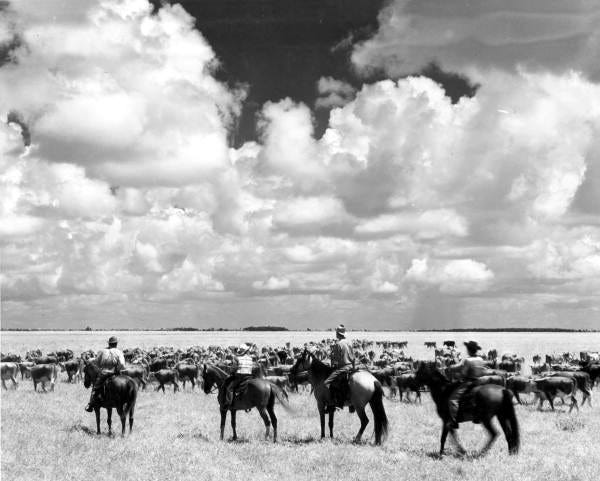
Native Americans also took their knowledge of ranching from areas in Alabama and Georgia, pushing the wild cattle from N and Primal Florida scrublands and prairies to South Florida, where the Seminole tribe hid out from U.Southward. troops and became major cattle producers — remaining so to this day with ane of the largest ranches in the state.
Today, Florida has 15,000 working ranches, according to the Florida Beef Council. The USDA shows the number of ranches increasing from 15,717 in 2002 to nigh xviii,500 today. But those numbers tin can include a Future Farmers of America student with a calf to x,000-acre ranches with hundreds of heads of cattle.
"One of the challenges is defining what a ranch is," said Jason Scheffler, a meat science and muscle biology professor at the University of Florida in Gainesville. "The ranches with hundreds, if not thousands, of cattle are easy, but does someone with 20 acres and a handful of cows count as a ranch? The ranch numbers end up beingness a petty fuzzy."
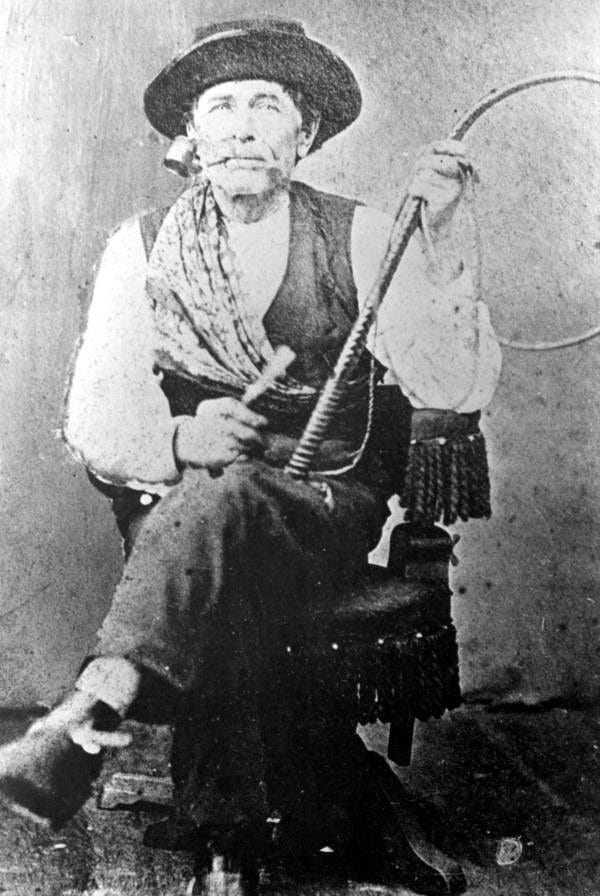
In fact, acre by acre, Fitzgerald is seeing macerated what his great-grandpa, Eastward.C. Stuart, a founder of Lake Wales, amassed in Lake Wales, Lake Placid, Indiantown, Sumter Canton, Hardee County and Bartow. His grandfather'due south dwelling house all the same exists backside Bartow Regional Medical Center on state that has been approved for a housing development.
He leases the land his family one time owned from the county. Post-obit the decease of his grandpa in 1991, his mother and her five sisters decided to sell in recent years. The county bought it as a conservation easement and Fitzgerald had to put in a bid "just like anyone else" to lease it back.
"The only fourth dimension you make any coin is when y'all sell out," Fitzgerald said.
Costs of raising cattle
Florida is predominantly what's known equally a cow-calf land. Weaned calves that are between 6 to 10 months onetime and weighing, on average, 450 pounds are shipped to feedlots in the western U.S. Florida ships approximately 450,000 calves each year. The economic impact of cattle ranching in Florida totals $2.1 billion annually, and employs at least 17,000 people, co-ordinate to the Florida Department of Agriculture and Consumer Services.
"On average, $150 to $200 per animal at the end of the day. Information technology definitely doesn't go to the cowman — it goes to anybody else."
According to the U.S. Department of Agronomics, Florida ranked twelfth in beef cows in 2019 with an inventory of 914,000 — 2.88% of the U.S. total. Texas, which was first with an inventory of 4,655,000, had more than v times as many beef cows. Polk Canton ranked fourth in the state with 94,000 cows. Okeechobee County, where the Seminole Nation has a ranch, ranked first with 185,000 caput of cattle followed by Highlands with 125,000 and Osceola with 97,000.
But statistics from the USDA besides bear witness that beef cattle and calve production has slowed, although it is currently holding steady. In 1996, there were i.8 million cows and calves in Florida. In 2019, there were 1.68 million. In Polk County, ranchers have seen their herds drop from a high of 100,000 in 2012 to the current total.
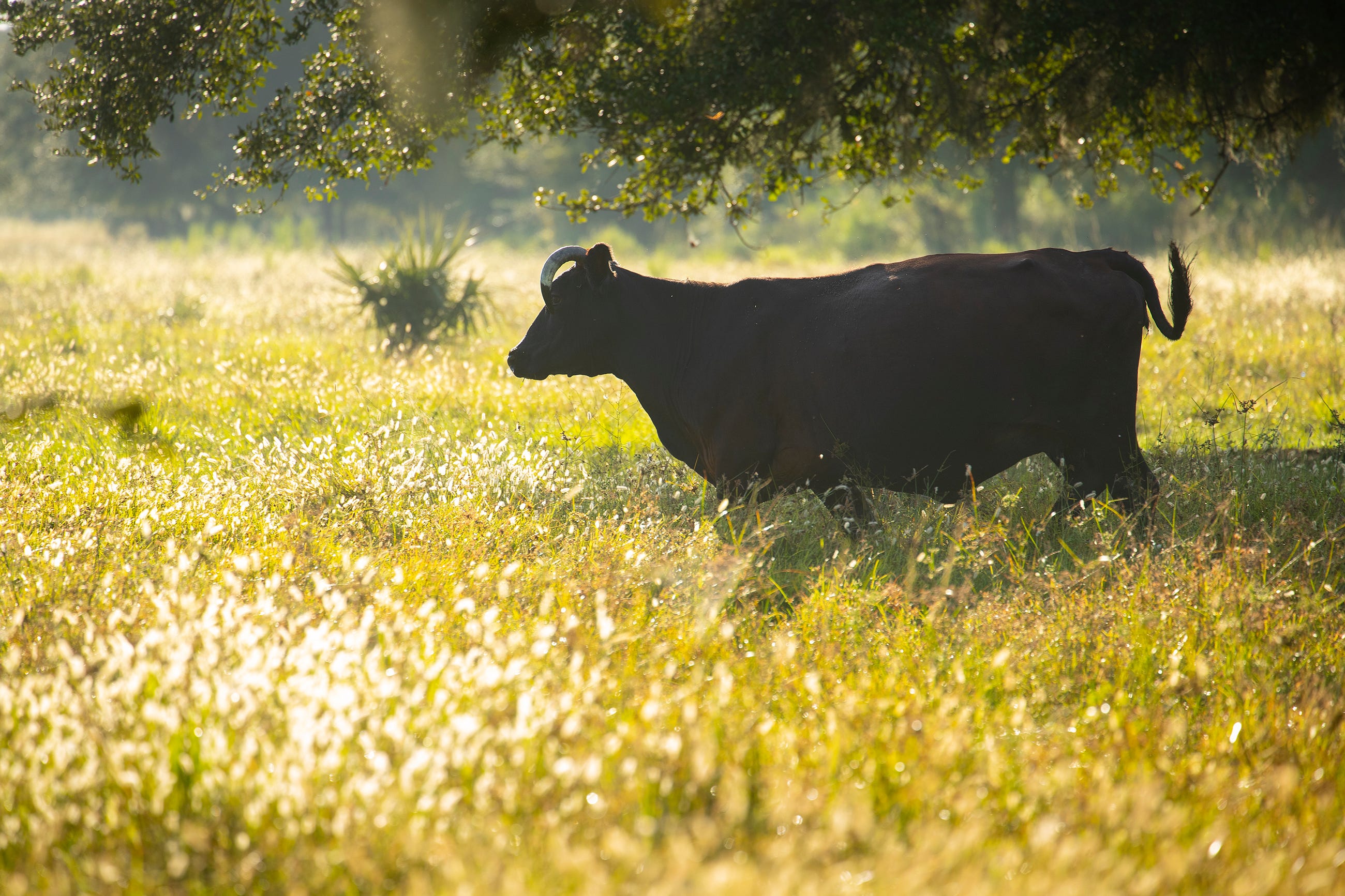
While the costs of everything from insurance, tick and fly treatments, feed and equipment take increased, the coin ranchers make selling their calves to feed lots has been on a bit of a roller coaster. In 2011, Florida ranchers made $489 million on the sale of their calves. In 2015, those sales hit an historic loftier of $870 meg. Last twelvemonth, it dropped to $475 million.
"In 2015 we were enjoying the highest feeder calf prices we've ever seen — part of that was simple supply and demand in our cattle cycle," said Dusty Holley, managing director of field services at Florida Cattleman's Association based in Kissimmee. "The numbers (of calves) were low just from the cyclical nature of our industry, but at that place was too a massive drought. A number of people in the years earlier had to sell off whole operations. We were at historic lows and need was stiff and so we were selling calves for a pile of money because they needed cattle to be in feed lots and be in processing plants to continue those places going."
Fitzgerald pays for everything from insurance and feed to tractors and repairs.
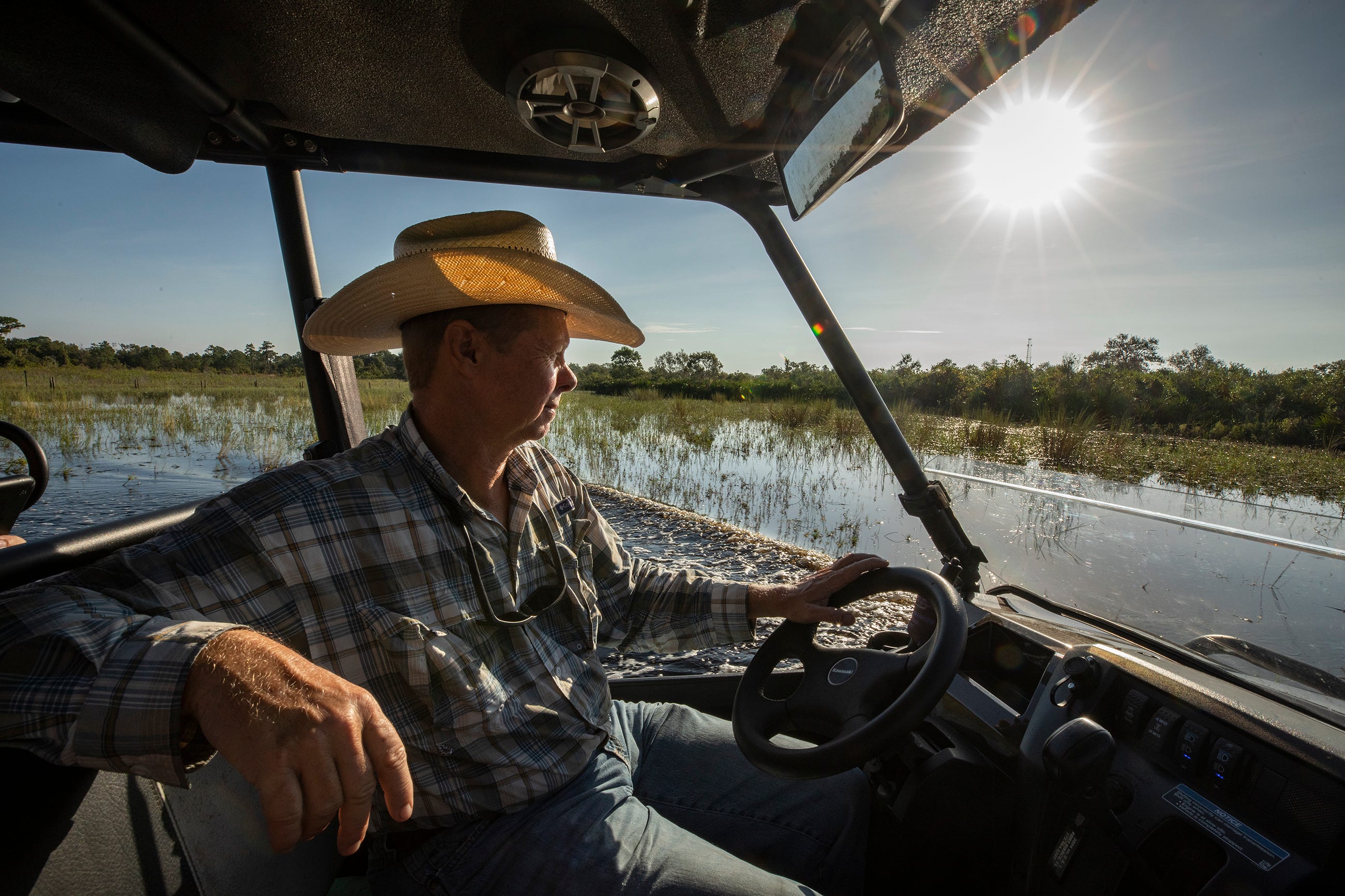
"Trying to stay in the cow business, I gotta have a truck and those are $seventy,000 at present. We accept to use them 'til they're wore slap out," Fitzgerald said, adding that a tractor to go on the fields mowed can cost $50,000-$70,000 while the mowing deck totals about $20,000. "Nosotros have to mow the pastures to keep the weeds out and increase grass production."
And, he said, farm equipment and trucks have gotten so sophisticated, with computers running then much, that farmers tin can hardly piece of work on their ain equipment any more.
He likewise has to pay for feed, fertilizer, pesticides and insecticides. One gallon of a pesticide to kill smut grass is $75. To apply it to even half of the iii,800-acre holding gets expensive.
"We become through a lot of coin," he said.
Withal, he can have intendance of a lot of the animals' health issues himself. Fitzgerald, who was raised past his mother and stepfather, went to college at Mississippi State to go a veterinarian. He switched to fauna sciences and learned about breeding and reproduction. He frequently finds himself checking on the health of an unborn calf in his herd past reaching into a cow'south rectum to check her neck, the uterine avenue, and a patch around the nerve sack. He can also check on how far forth the dogie is past its size, comparing it to a rat, true cat or dog. He does this as consulting work on nearby ranches, equally well.
As for how much he makes per head of cattle, "information technology's difficult to say, depending on our feed costs and what female parent nature does to united states of america," he said.

The feed yards out due west get nigh $150 per cow and the packing houses are making, he said, well-nigh $350 per cow.
"On average, $150 to $200 per animal at the end of the day," he said. "Information technology definitely doesn't go to the cowman — it goes to everyone else."
Ranchers as well stick together. In Polk Canton, similar in other areas of the country, they have a cost-share program that ranchers can join to help outset expenses for big projects. For example, Fitzgerald recently installed two wells, but the cost-share program paid for 75% of it.
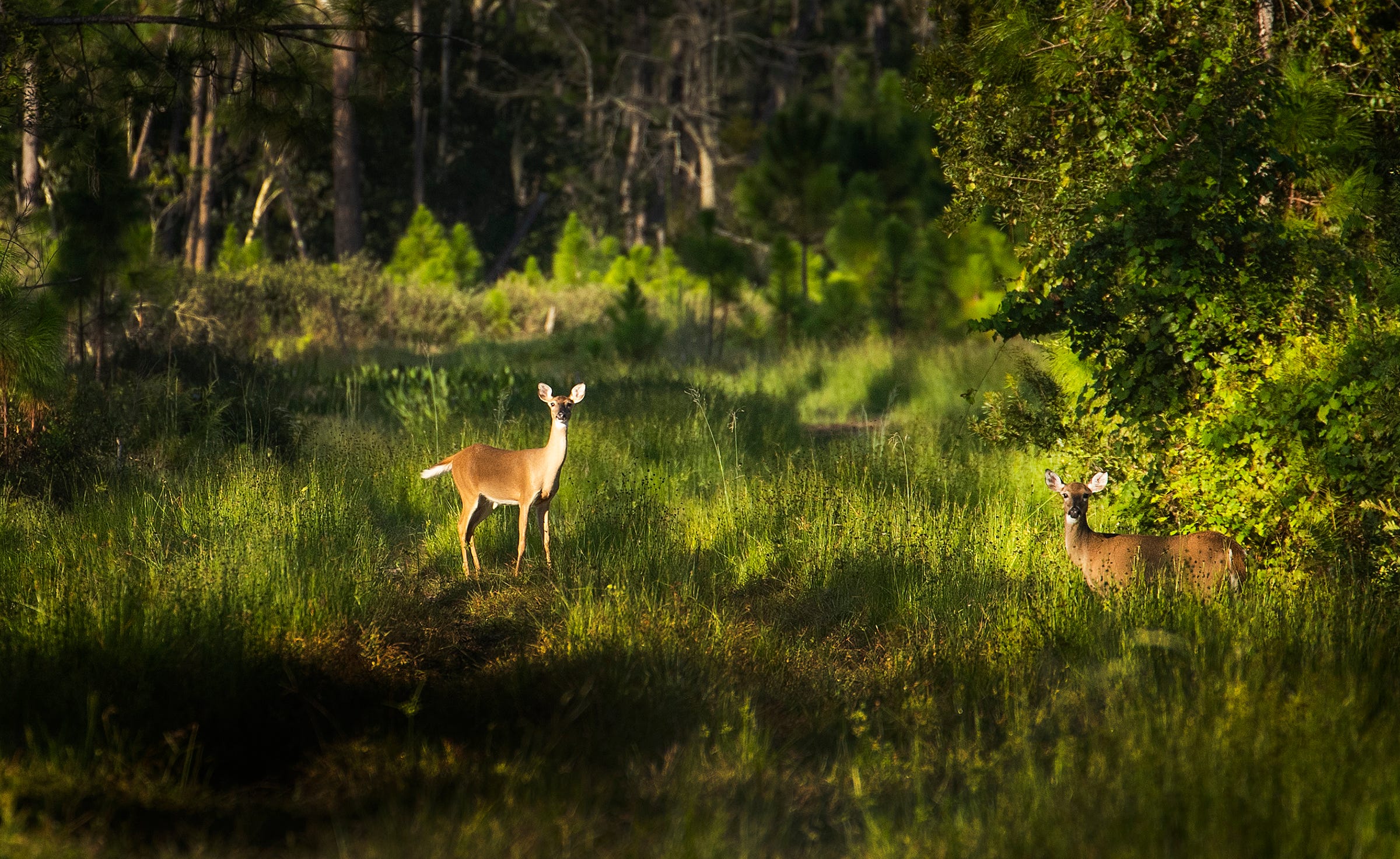
Plenty of regulations
While almost people think raising cattle involves putting them in a pasture and leaving them there to graze, there is and so much more to it. Ranchers accept to ensure their fence lines are maintained — for Fitzgerald, that means 40 miles of fence surrounding 3,800 acres on his three pastures. He must likewise provide feed in the dry wintertime months when the grass doesn't grow, use pesticides to keep pastures cleared of invasive species, try to go on flies and ticks off of the cattle through medicinal treatments, and go along the cattle out of wet areas during the summer rainy flavour every bit much every bit possible.
"This moo-cow deal, yous gotta halfway be a scientist, weatherman, economist and agronomist," Fitzgerald said.
And a lot of what he has to practice to maintain the land and the cows is regulated past state and federal authorities rules and laws.
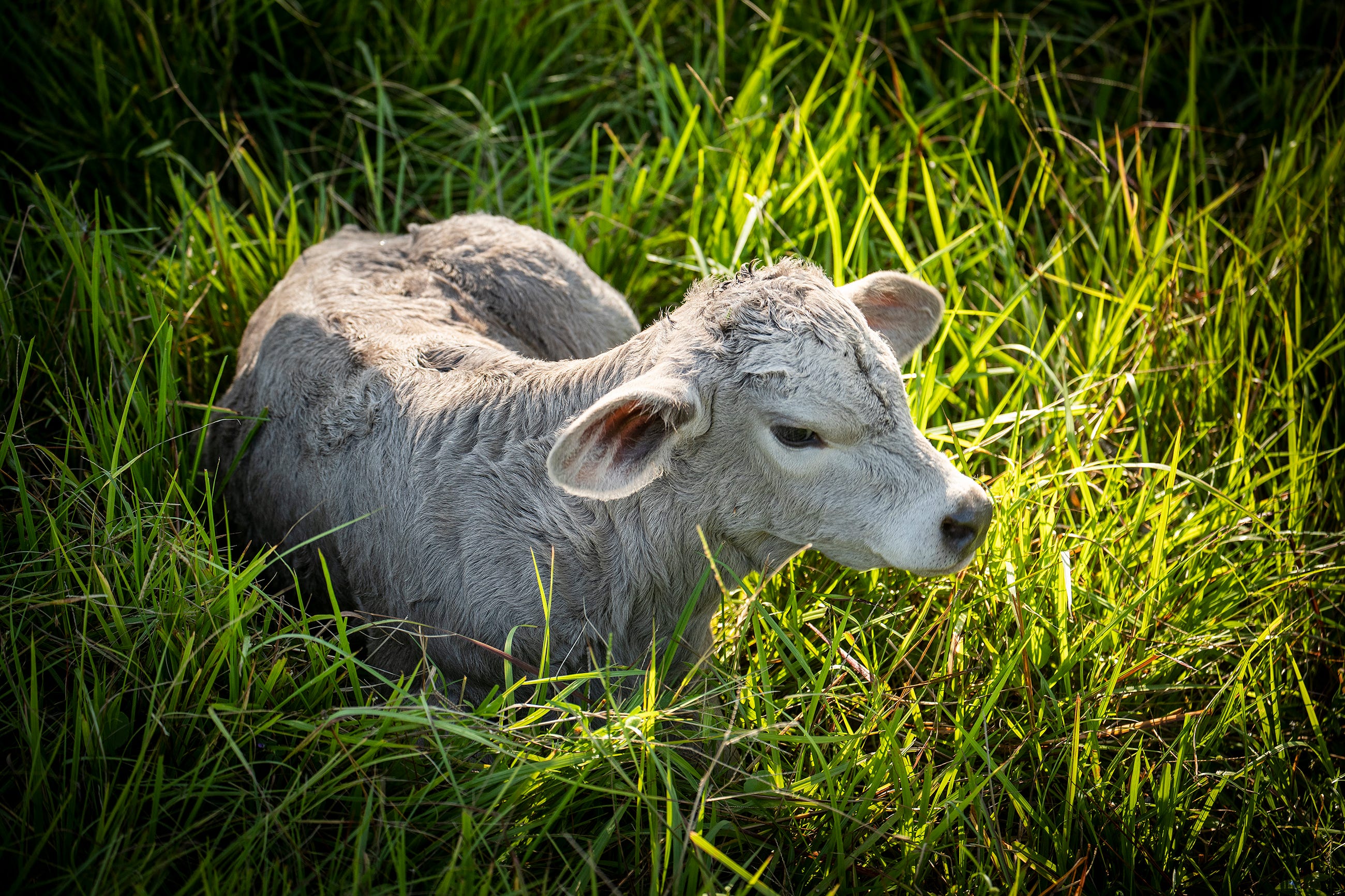
Fitzgerald said the state wants ranchers to utilize what's known every bit best management practices when information technology comes to all aspects of his ranchland and cattle. He points to soda apple plants, Chinese tallow trees and smut grass, which can take over a pasture of bahiagrass if left alone.
"When I was a kid growing upwards, nosotros didn't take," those plants, he said. "They want to put more than regulations on united states — not just traceability, but accounting on every single thing we're doing. They want to know what are you lot spraying, how much are you spraying, where are y'all spraying."
Federal regulations include determining which pesticide and animate being waste discharges from his ponds and creeks require permitting by the National Pollutant Belch Elimination System.
In addition to federal laws, the country has dozens of regulations, including everything from branding and vaccinations, inspections, permits to use food garbage to feed animals, requiring livestock transporters to provide food, water and care for trips longer than 28 hours, and prohibits overcrowding when transporting livestock.
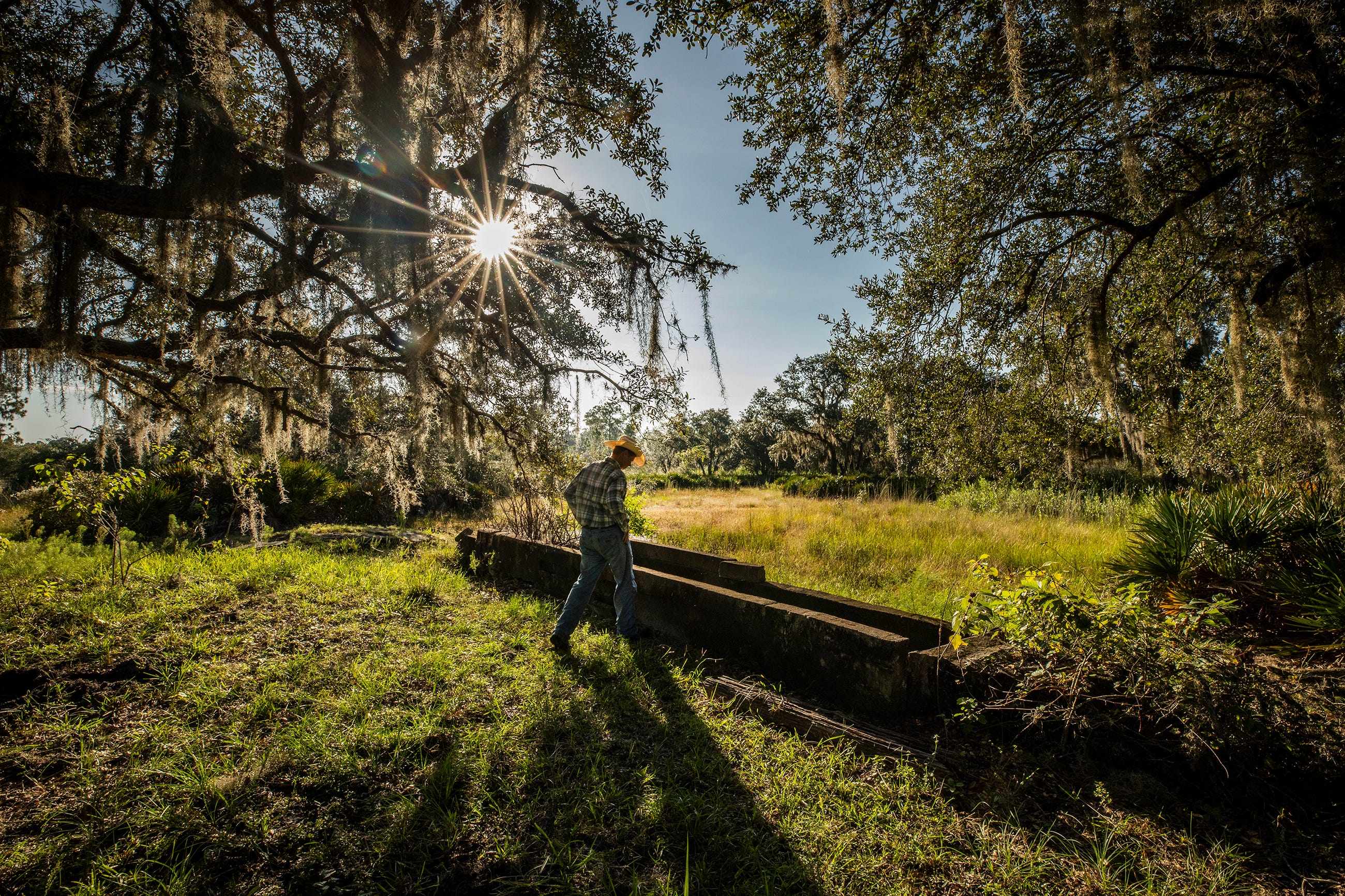
Keeping flies and ticks off cows is an age-onetime trouble in the cattle industry. Between 1906 and 1962, the land and private ranchers constructed nigh 3,400 dipping vats — open up-air concrete troughs nigh vii-feet deep that were filled with h2o and pesticides and through which each ranch'due south cow, calf and bull was herded.
"The vats were generally filled with an Arsenic solution that killed the ticks," the Florida Wellness Department website states. "It is now known that the solutions used in these cattle-dipping vats are harmful to humans and areas with the vats may have contaminated ground h2o in their vicinity. Other possible contaminants are beta-Hexachlorocyclohexane, (dichlorodiphenyltrichloroethane, besides known as) DDT, and toxaphene."
Fitzgerald has at least ii of those erstwhile vats on his ranchland, i he believes his granddad built and the other the state constructed. Getting out of the four-bicycle drive at one of them, Fitzgerald could see in his listen's eye his granddad and ranch hands there after a hard day's work.
"They probably told some practiced stories and drank some skilful whiskey around this affair," he said.
The vats were outlawed in the 1960s.
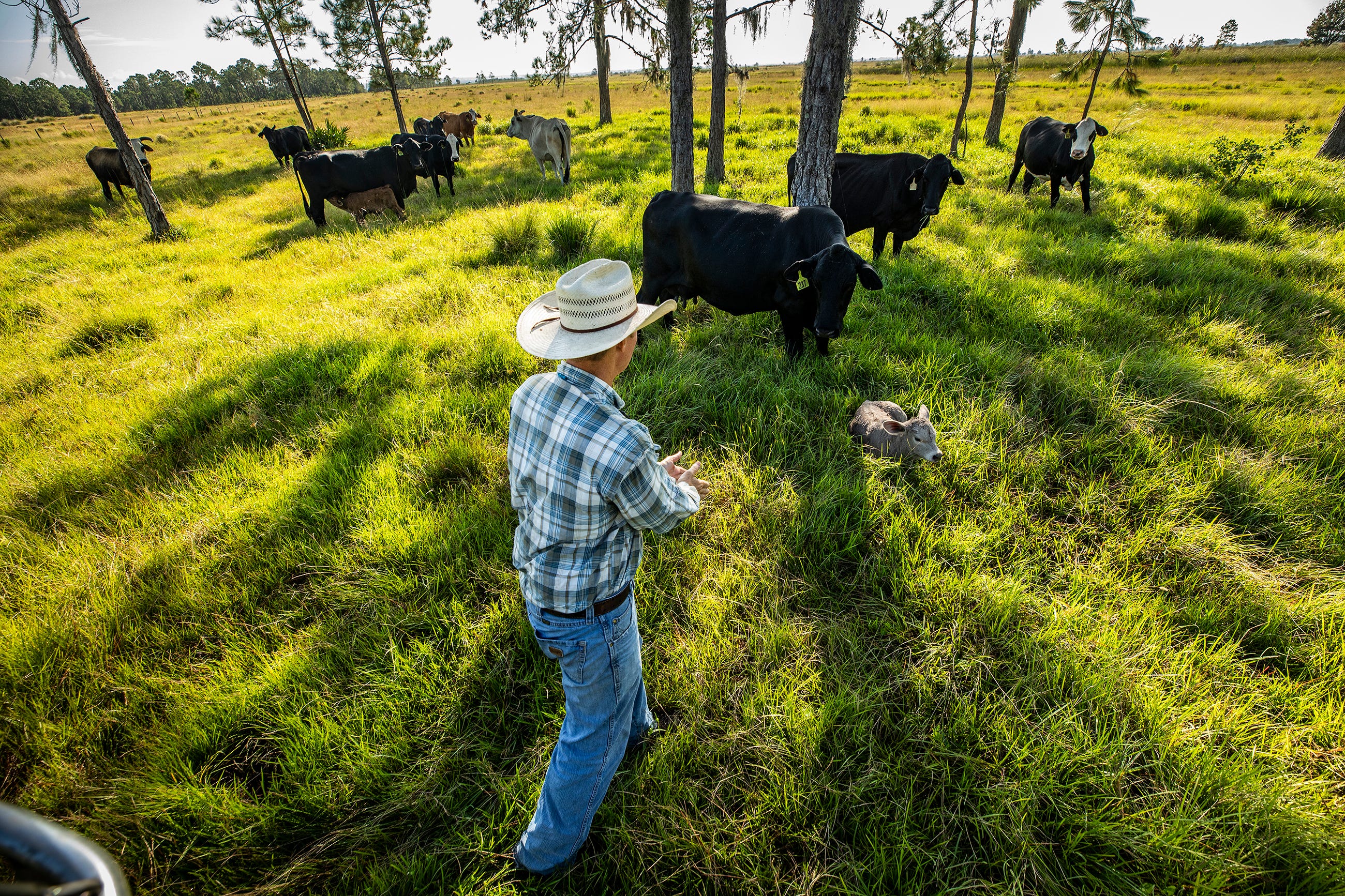
State of origin labeling
Fitzgerald and other Polk Canton ranchers put office of the blame of low beef prices on cows imported from Mexico and Canada. He says Mexico, in particular, doesn't regulate its cattle manufacture like the United States, then they don't have to adhere to strict guidelines in pesticide and fertilizer utilise or pay workers at least a minimum wage of $viii.56 an 60 minutes similar ranchers practice in Florida.
"They nevertheless have dipping vats," Fitzgerald said.
"At that place's cipher against folks labeling voluntarily where their beefiness was raised. For example, Florida Cattle Ranchers is a branded product — completely born, raised, fed hither in Florida. Just there'southward no mandatory labeling."
According to the U.S. Department of Agronomics, Mandatory Country of Origin Labeling, also known as MCOOL, is a labeling law that requires retailers, such every bit grocery stores and gild warehouse stores, to notify their customers with data regarding the source of certain foods, including beef products. The MCOOL regulations began with the Agricultural Marketing Human activity of 1946. They were amended with the Farm Security and Rural Investment Act of 2002, the 2002 Supplemental Appropriations Deed, and the Food 2 Conservation and Energy Act of 2008 to require retailers to notify their customers of the country of origin of covered foods.
But the World Trade Arrangement sued, proverb it was unfair to and harming Canadian and Mexican growers. So the Consolidated Appropriations Human activity of 2016 amended the police to remove muscle cut beef and pork, and ground beef and pork from MCOOL requirements in order to bring the U.s. into compliance with its international trade obligations. Holley said the U.Southward. faced billions of dollars in sanctions if it continued with MCOOL
In June 2018, a U.Due south. District Court dismissed a lawsuit brought on behalf of ranchers in Washington land. The lawsuit alleged that the USDA was unlawfully allowing imported beef to exist both sold to consumers without a country of origin label and sold to consumers with a "Product of USA" label, fifty-fifty if the animal from which the beef was derived was born, raised and slaughtered in a strange land.
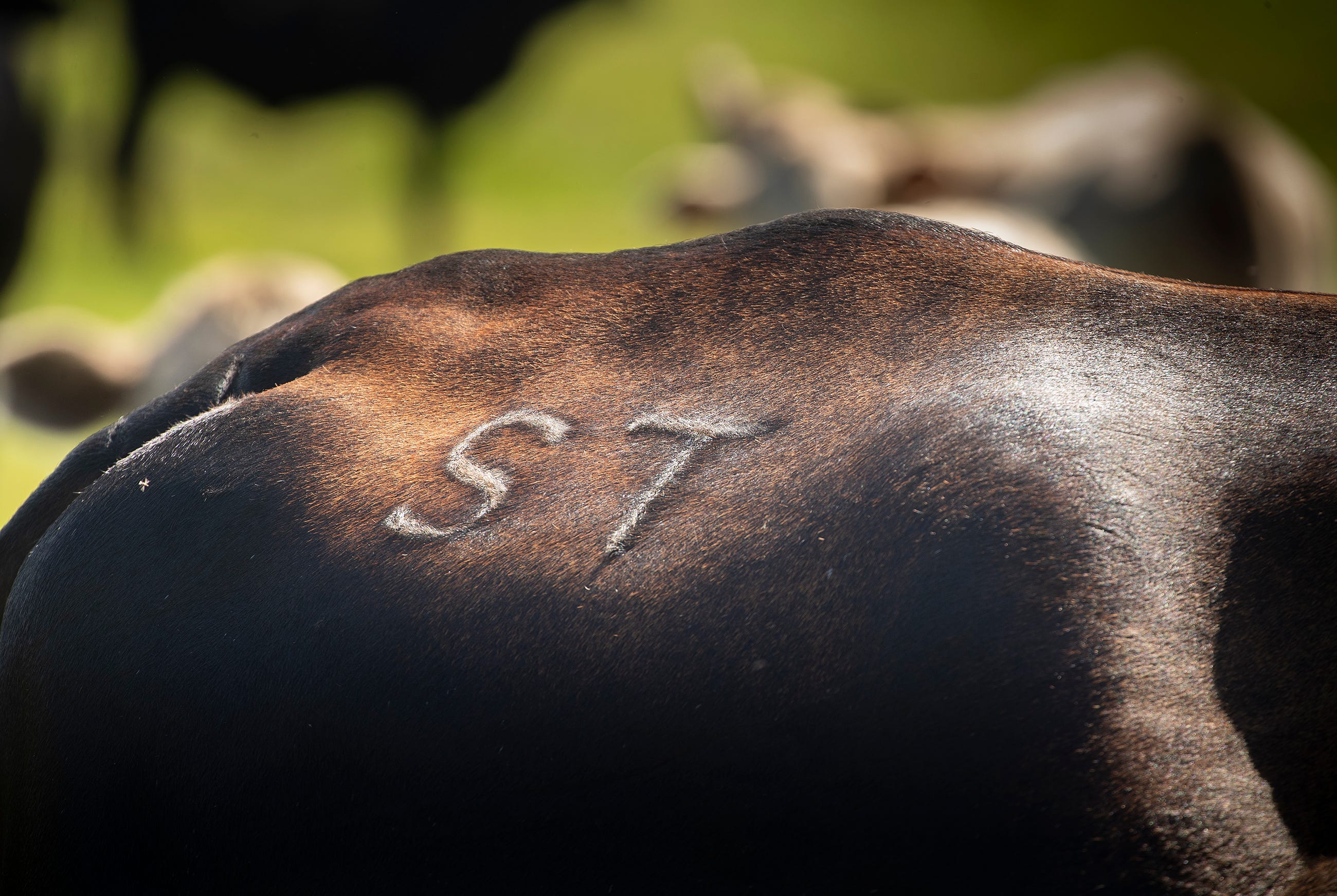
Holley said that at face up value, labeling where beefiness comes from might seem similar a adept idea, merely the issue is complicated. He said grocery stores similar Publix and Winn-Dixie could voluntarily include state of origin labels on beef products, just don't because consumers are non enervating it.
"There'due south aught against folks labeling voluntarily where their beef was raised," Holley said. "For case, Florida Cattle Ranchers is a branded production — completely born, raised, fed here in Florida. Only there's no mandatory labeling."
He explained that live calves from Mexico and Canada — the only countries from which alive calves tin can be imported — are shipped to Western feed lots in places like North Texas, Kansas, Nebraska and Colorado. The calves are fed corn to increase their muscle weight. Holley said it's cheaper to ship the calves there then ship the feed here. The calves are slaughtered when they are about xviii months to two years sometime. Beef from the U.S., Canada and Mexico is ground together into hamburger, while a lot of American raised cows take their beefiness sold to places like Japan and Europe as loftier-terminate steaks.
"When beef is processed and getting ground into hamburger, tracking where every animal comes from when pieces of that animal go into the processor ... that adds a whole level of cost at the processing site," Holley said. "Those type of things are typically driven by the consumer or retail market. They oft don't because information technology doesn't modify their bottom line. At that place's certainly only certain people who only want to buy certified American beef."
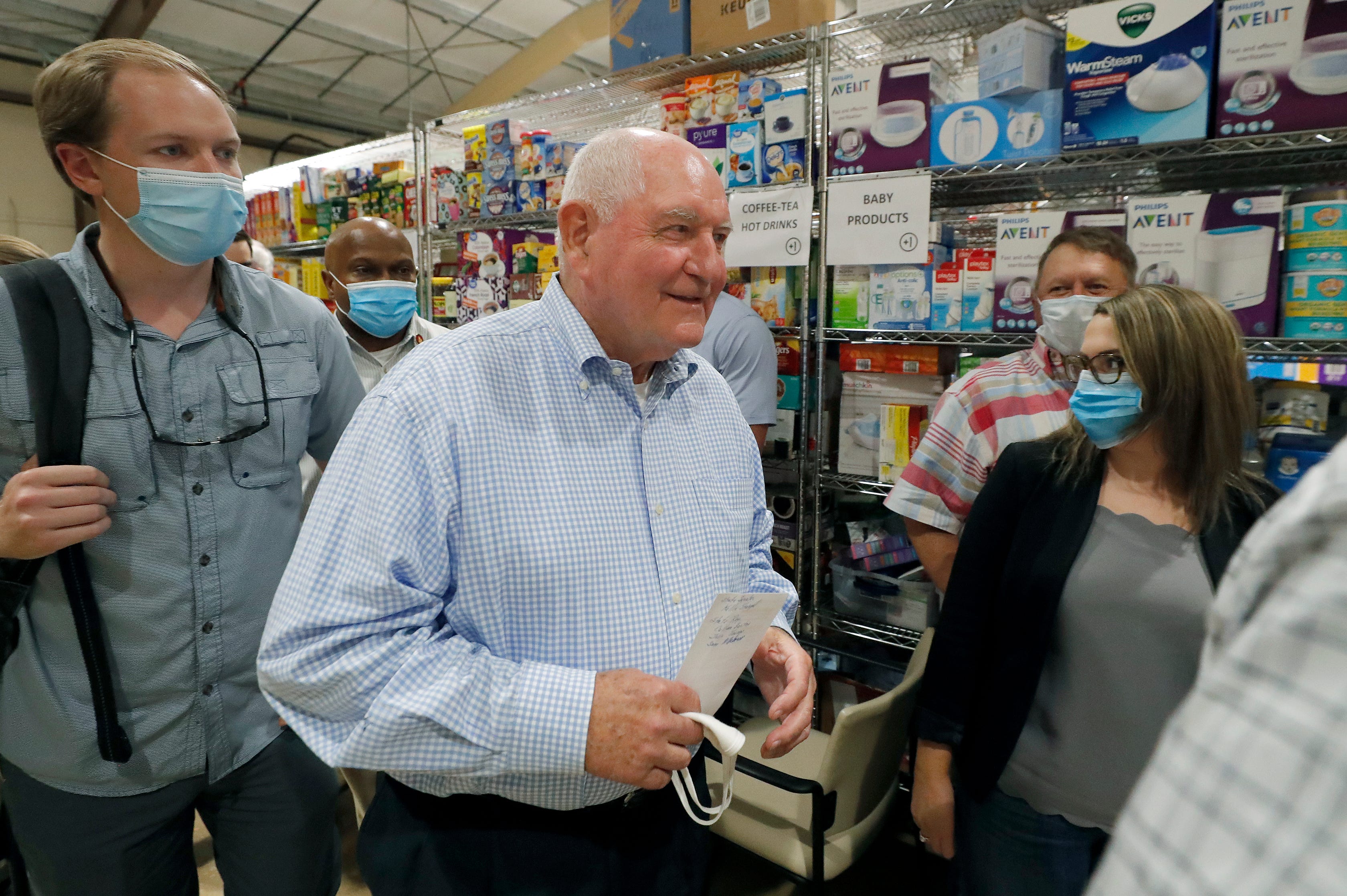
Trump administration
Ranchers overwhelmingly bandage their ballots for Donald Trump in 2016, hoping the MCOOL event could exist fixed. And, although he has signed executive orders for a multitude of other things, neither the president nor Section of Agriculture Secretary Sonny Perdue have proposed legislation or regulations to restore MCOOL. There is a resolution in the U.S. Senate, but it has not been passed.
"USDA is actually moving toward a labeling product that says grown and processed in the U.s.a., which I think will help. ... So, we cannot become to the total country of origin of labeling, but we are going to a product called characterization, born, grown and processed in the United States."
In fact, in a recent interview with The Ledger, Perdue said litigation is still pending against the U.S.
"USDA is actually moving toward a labeling product that says grown and candy in the U.s.a., which I recollect will assistance," Perdue said during a June viii end in Lakeland. "It's not the full solution, but this has been a frustration for growers ... So, we cannot become to the total state of origin of labeling, but nosotros are going to a production called label, born, grown and processed in the United States. We won't have as much transparency every bit we're legally immune to accept. It's in the procedure now. Nosotros recollect the rule will be pretty shortly."
More: Polk City rancher praises Trump for support of agriculture
Others dispute that Perdue or the president can't do anything nigh information technology. Bill Bullard is chief executive officer of Ranchers-Cattlemen Activeness Legal Fund United Stockgrowers of America based in Montana. R-Dogie USA is the largest producer-simply membership-based organisation that exclusively represents U.S. cattle and sheep producers on domestic and international merchandise and marketing issues.

"I am not aware of any lawsuits that would now, or before, forbid Secretary Perdue from revising his regulations apropos the labeling of beef," Bullard said in an email. "In that location is a Absurd case filed in the New Mexico state courtroom that is now on entreatment at the tenth circuit, but that example is against the meatpackers who are applying the inaccurate labels, so it would not prevent the Secretary from correcting his unlawful labeling regulations."
Bullard said that the court, when dismissing R-CALF's case in 2018 because of a statute of limitation issue, stated that U.South. cattle producers were harmed by MCOOL's repeal and further stated that Congress should be asked to change the statute.
"And then that's what we're working on," he said, adding that he is request ranchers to sign an online petition. "The biggest hurdle is the overreaching Globe Trade Arrangement ruling and then we have circulated a white paper to Congress on how to restore Cool for beefiness without running afoul of the WTO ruling. We have some congressional offices interested in this."
Fitzgerald just shakes his head.
"Everything else you buy has to say where it comes from," he said.
However, Fitzgerald noted that the Trump assistants did create the Corona Food Aid Program for Livestock to assist ranchers during the pandemic who continue to confront market disruptions and associated costs because of COVID-nineteen. There is a payment rate of $55 per caput of cattle, up to $250,000 or four,546 head per rancher.
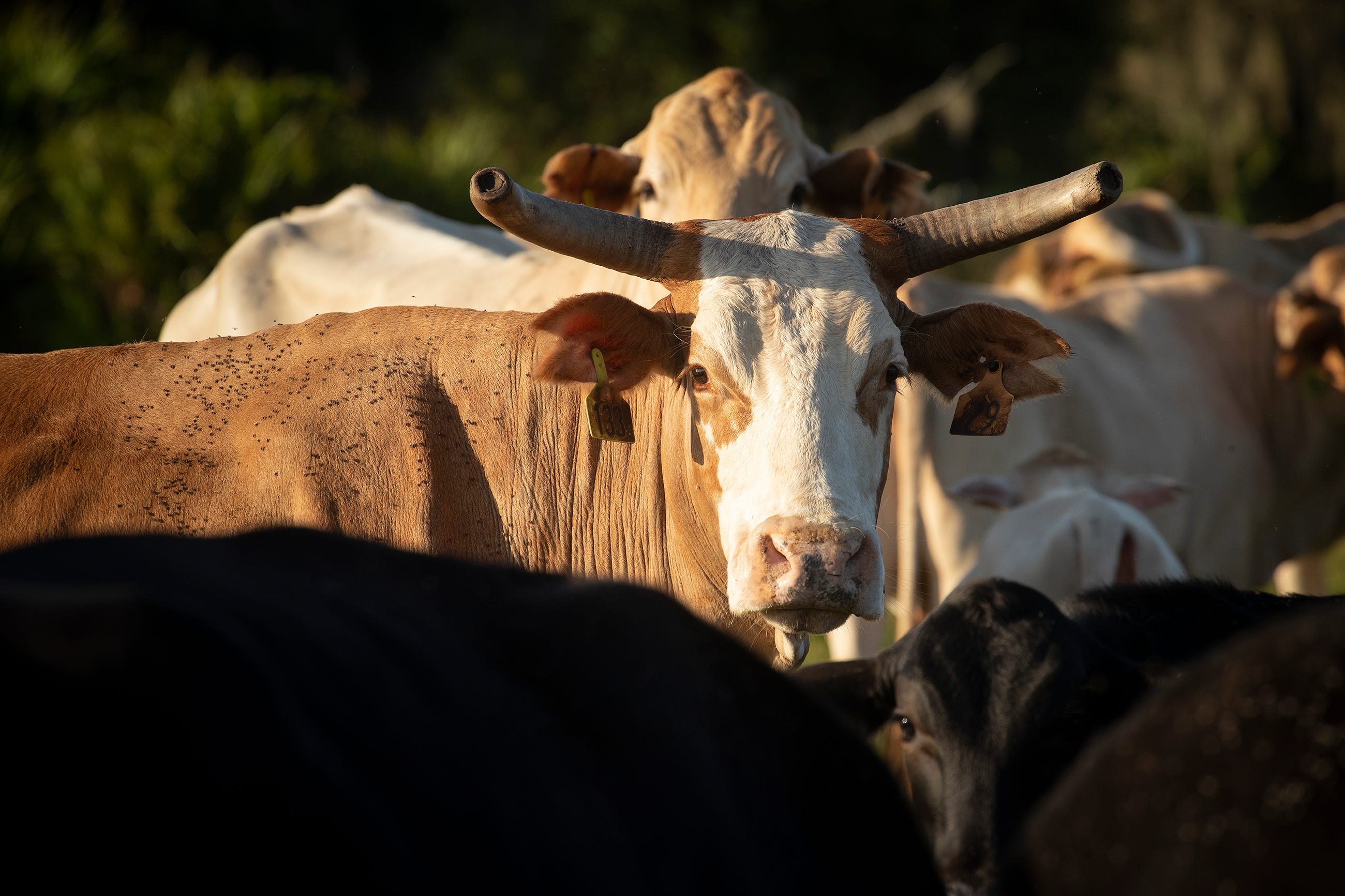
Stewards of the land
Equally Fitzgerald checked on some of the sprawling 3,800 acres, he spotted a pair of deer along a path. A rabbit zipped in forepart of his four-wheel drive vehicle in a dorsum pasture. He talked of endangered burrowing owls on his bull pasture about Crooked Lake and lighting fires to clear away underbrush afterward pine forests are harvested.
"Almost cattlemen are conservationists," he said.
In fact, millions of acres of ranching land throughout Florida are used equally conservation easements — state that volition always be held in trust by the state or counties in social club to maintain the environment while notwithstanding beingness used as cattle ranches.
Florida Forever is the state's conservation and recreation lands acquisition program, with approximately x million acres managed for conservation in Florida. More than than 2.five million acres were purchased under the Florida Forever and P2000 programs.
Areas like the Allen David Broussard Catfish Creek Preserve in eastern Polk County, the Lightsey Ranch along U.Southward. Highway sixty and the Adams Ranch lands in Osceola Canton are committed to preserving nature.
The Allen David Broussard Catfish Creek Preserve is a state park near Haines City and covers more than viii,000 acres of scrub, sandhill and flatwoods, in addition to 65 acres of submerged country — a lasting tribute created past his parents for the wildlife biologist, who was working on his Ph.D. when he died from complications of treatment for Hodgkin'south Disease.
According to the park's website, it's home to rare plants, such as the scrub morning celebrity, scrub plum, pygmy fringe tree and cutthroat grass, and several protected animal species including Allen Broussard'south favorite bird, the Florida scrub jay, bald eagles, gopher tortoises and Florida scrub lizards. A sis preserve is located side by side to Forever Florida and the Crescent J Ranch in Osceola County, besides endemic by the Broussard family.
The Adams family unit'southward Osceola ranch includes more than 6,000 acres of conservation easements to encourage futurity generations of the family to continue the land as a working ranch. The Lightsey family owns more than 18,000 acres, lxxx percent of which are conservation easements.
For Fitzgerald, selling the country to Polk County equally a conservation easement means it will never exist developed.
"This place has been in the family unit a long fourth dimension and even though I charter it, it's my peace of listen," he said.
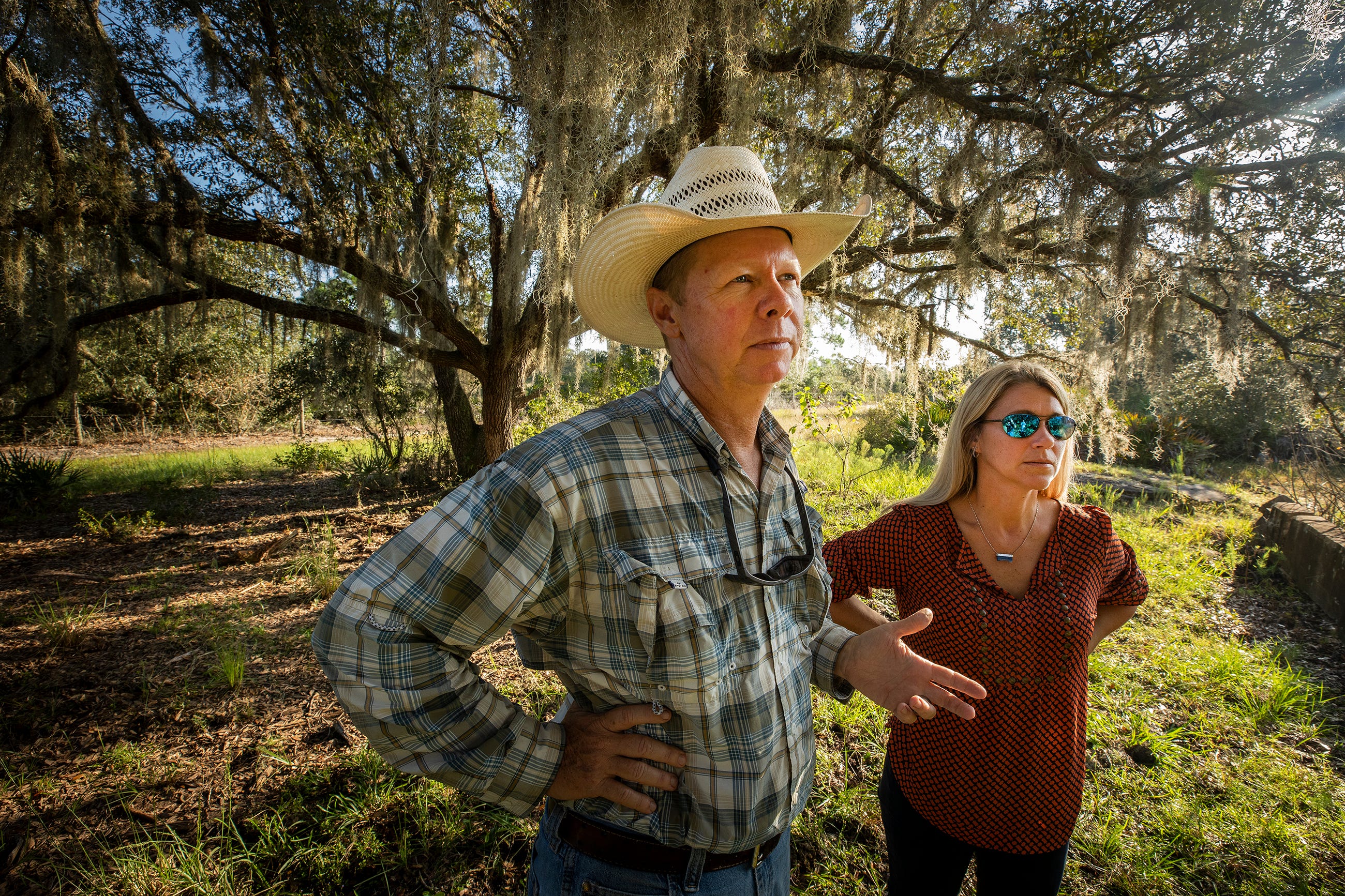
Next generation
Fitzgerald knows his profession is one that's seeing a decline. But Winter Oasis Loftier School agriculture teacher Christy Durham McCullough is hoping to assistance.
Her agriculture course introduces students to all aspects of horsemanship, including handling, training and management, along with riding.
"We're getting pushed out no matter what. I don't know that my son volition be able to do this."
"Horses are actually one of Florida's strongest growth sectors in ag," Durham McCullough said. "We want to expose them to the wide variety of careers and higher didactics opportunities in the equus caballus globe. It also makes the students practice teamwork and problem-solving skills because they are partnered with other students and with an animal that can counterbalance anywhere from 250-1,200 pounds. Yous don't force them to (practice annihilation), and you can't merely quit."
She has 161 students, simply only 13 on campus in this pandemic year.
Fitzgerald said he has a friend who has retired equally a U.S. Navy SEAL and wants to start a ranch.
"I don't know that you can," Fitzgerald said. "I've spent a lifetime acquiring equipment, but it all makes things work. It's not just the equipment, it's the noesis, too."
For case, equally he rode across a wet and marshy pasture, Fitzgerald said, "The onetime timers e'er said if information technology rains a lot, you want to fill the mineral box with sulfur because it helps their anxiety from standing in the water all the time."
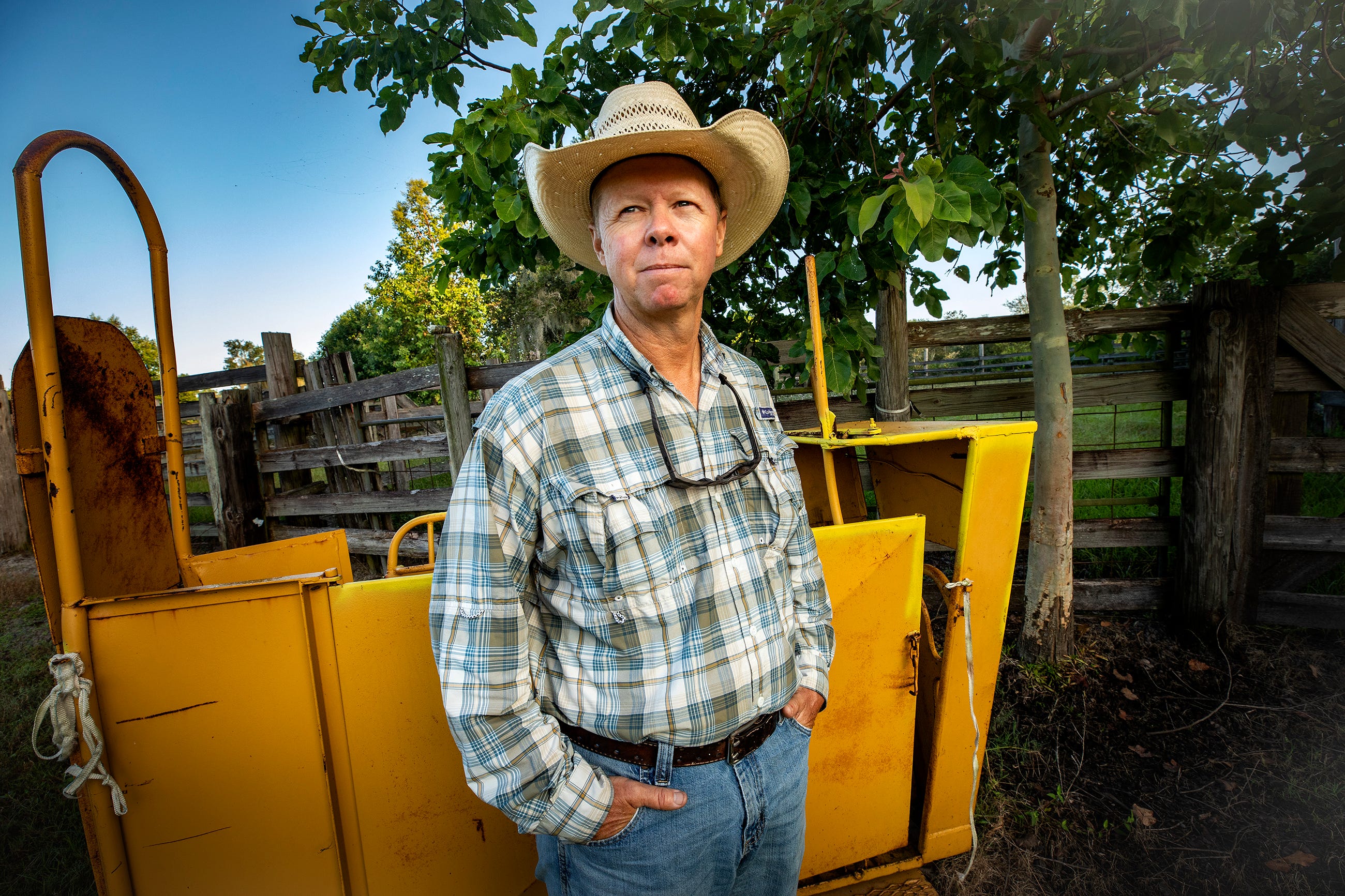
Fitzgerald and his married woman Stephanie are both also in the real estate business and he has shown his friend a 28-acre holding near Fort Green.
"He's asking me how he can get started and I don't know."
Fitzgerald'southward hope now lies in his son, 9-twelvemonth-former Bryce, who has a small herd of seven cows of his own and helps his father with herding, branding and other ranch chores atop a 27-twelvemonth-erstwhile roping equus caballus that one time belonged to Fitzgerald.
"He always says he's educational activity the equus caballus, only actually that horse is instruction him," Fitzgerald said. "I want my son growing upwardly doing this; I don't want him out in the streets. I want him frog hunting, I want him deer hunting."
Only looking out over the almost four,000 acres from atop a cattle tunnel that runs under U.S. Highway 27, Fitzgerald was wistful.
"We're getting pushed out no thing what. I don't know that my son will be able to do this."
Ledger reporter Kimberly C. Moore can be reached at kmoore@theledger.com or 863-802-7514. Follow her on Twitter at @KMooreTheLedger.
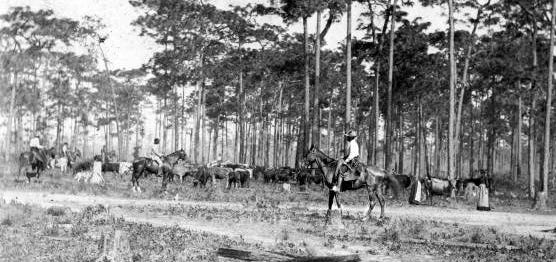
By The Numbers
U.Southward. Cattle Totals
Top 20 States: 2020 Ranking
1. Texas: 13,000,000
2. Nebraska: 6,800,000
3. Kansas: six,450,000
4. California: v,200,000
4. Oklahoma: 5,200,000
6. Missouri: 4,350,000
vii. Iowa: 3,900,000
7. South Dakota: 3,900,000
9. Wisconsin: 3,450,000
10. Colorado: ii,800,000
xi. Montana: ii,500,000
12. Idaho: ii,490,000
xiii. Minnesota: 2,280,000
fourteen. Kentucky: 2,130,000
fifteen. Northward Dakota: i,900,000
16. Tennessee: i,810,000
17. Arkansas: 1,740,000
18. Florida: one,680,000
xix. Pennsylvania: 1,530,000
twenty. New York: 1,470,000
Source: National Agronomics Statistics Service/USDA
U.Southward. Beef Cattle Totals
Acme 20 States: 2019 Ranking
1. Texas: 4,655,000
2. Oklahoma: 2,150,000
3. Missouri: 2,059,000
4. Nebraska: 1,941,000
v. South Dakota: ane,818,000
6. Kansas: 1,529,000
7. Montana: 1,448,000
eight. Kentucky: ane,017,000
9. North Dakota: 985,000
ten. Iowa: 950,000
11. Arkansas: 935,000
12. Florida: 914,000
12. Tennessee: 914,000
14. Colorado: 797,000
15. Wyoming: 714,000
16. Alabama: 705,000
17. California: 650,000
18. Virginia: 631,000
nineteen. Oregon: 545,000
twenty. Idaho: 506,000
Source: National Agriculture Statistics Service/USDA
Florida Cattle Totals
Leading counties 2019
i. Okeechobee: 185,000
ii. Highlands: 125,000
3. Osceola: 97,000
four. Polk: 94,000
v. Hardee: 71,000
Source: UF/IFAS
Florida Cash Receipts for Cattle & Calves
2011: $489 million
2012: $635 one thousand thousand
2013: $647 1000000
2014: $868 1000000
2015: $870 one thousand thousand*
2016: $546 million
2017: $586 million
2018: $511 million
2019: $475 1000000
*-highest on record
Source: National Agriculture Statistics Service/USDA
CORRECTION
An earlier version of this story should have stated that Stuart Fitzgerald was raised by his female parent and stepfather. In addition, Fitzgerald checks on the health of unborn calves by reaching into a cow'southward rectum.
Source: https://www.theledger.com/in-depth/news/2020/10/23/polk-cattle-ranchers-face-competition-foreign-beef-sources/3671102001/